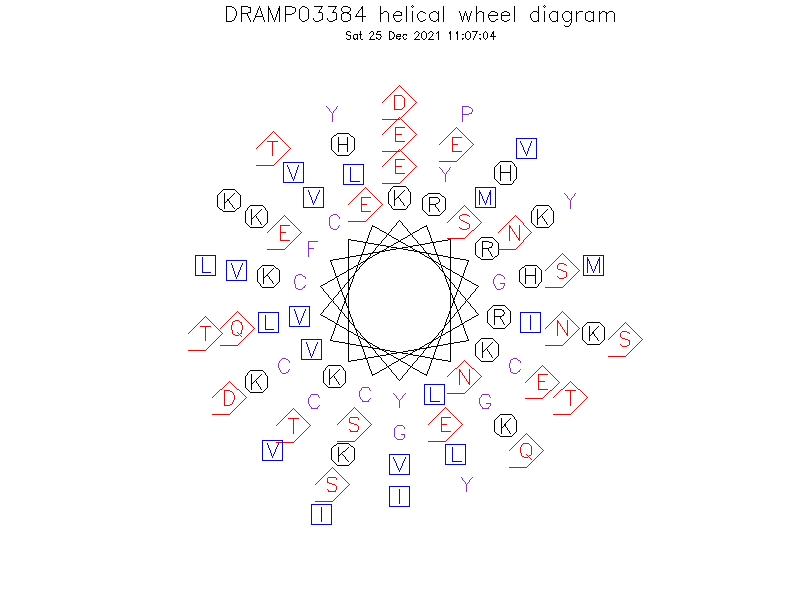General Information
-
DRAMP ID
- DRAMP03384
-
Peptide Name
- Beta-defensin 20 (BD-20, mBD-20; Defensin, beta 20; Rodents, mammals, animals)
-
Source
- Mus musculus (Mouse)
-
Family
- Belongs to the beta-defensin family
-
Gene
- Defb20
-
Sequence
- KRCFSNVEGYCRKKCRLVEISEMGCLHGKYCCVNELENKKHKKHSVVEETVKLQDKSKVQDYMILPTVTYYTISI
-
Sequence Length
- 75
-
Protein Existence
- Homology
Activity Information
-
Biological Activity
- Antimicrobial, Antibacterial
-
Target Organism
- No MICs found in DRAMP database
-
Hemolytic Activity
-
- No hemolysis information or data found in the reference(s) presented in this entry
-
Cytotoxicity
-
- Not included yet
-
Binding Target
- Not found
Structure Information
-
Linear/Cyclic
- Not included yet
-
N-terminal Modification
- Not included yet
-
C-terminal Modification
- Not included yet
-
Nonterminal Modifications and Unusual Amino Acids
- Not included yet
-
Stereochemistry
- Not included yet
-
Structure
- Bridge
-
Structure Description
- Not found
-
Helical Wheel Diagram
-
PDB ID
- None
-
Predicted Structure
- There is no predicted structure for DRAMP03384.
Physicochemical Information
-
Formula
- C385H626N106O113S8
Absent Amino Acids
- AW
Common Amino Acids
- K
Mass
- 8804.33
PI
- 8.93
Basic Residues
- 17
Acidic Residues
- 9
Hydrophobic Residues
- 18
Net Charge
- +8
-
Boman Index
- -149.1
Hydrophobicity
- -0.519
Aliphatic Index
- 77.73
Half Life
-
- Mammalian:1.3 hour
- Yeast:3 min
- E.coli:2 min
Extinction Coefficient Cystines
- 7825
Absorbance 280nm
- 105.74
Polar Residues
- 26
DRAMP03384

Comments Information
Comment
- No comments found on DRAMP database
Literature Information
- ·Literature 1
-
Title
- Cross-species analysis of the mammalian beta-defensin gene family: presence of syntenic gene clusters and preferential expression in the male reproductive tract.
-
Pubmed ID
- 16033865
-
Reference
- Physiol Genomics. 2005 Sep 21;23(1):5-17.
-
Author
- Patil A.A, Cai Y, Sang Y, Blecha F, Zhang G.

